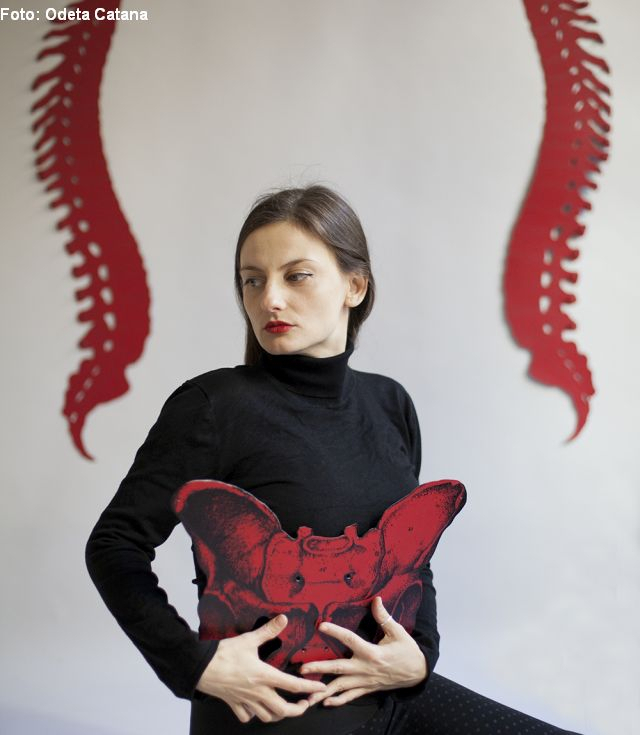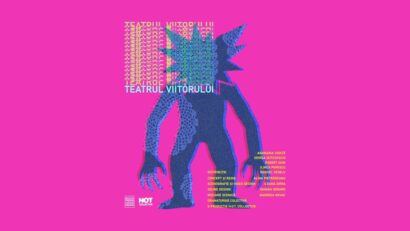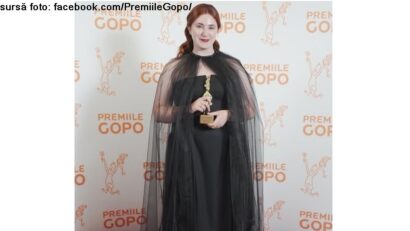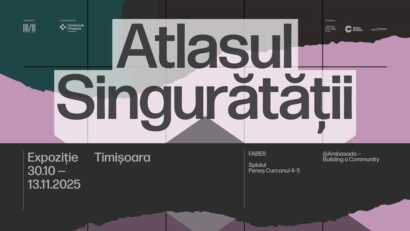“Shaving the Caterpillar”
An exhibition by Ileana Pașcalău at Mobius Gallery in Bucharest

Ion Puican, 05.11.2022, 13:09
Between mid-October and mid-November, the Mobius Gallery in Bucharest,
one of the most important places in the city that bring contemporary art closer
to the public, is hosting an exhibition by Ileana Pașcalău, entitled Shaving
the Caterpillar. The artist was born in Caransebeș (western Romania), and she is now living and working in Berlin. Ileana Pașcalău is a visual artist and an
art historian, and her current exhibition brings together art and the
theoretical investigation of the history of the human body, particularly the
female body:
Ileana Pașcalău: Shaving the Caterpillar is the name of the exhibition I put
together jointly with the curator Valentina Iancu, at the invitation of Mobius
Gallery. The exhibition is designed as a journey into the history of the female
body, from a medical perpective. The project is based on a broader research
effort that I embarked upon in 2017, when I was looking for a topic for my
Ph.D. thesis. So it all started from a theoretical investigation that spanned
several years and focused on the anatomy of women as seen by physicians, mainly
men, between the 17th and the 19th Centuries. I would
also like to emphasise the importance of my family background in the
development of these ideas. I grew up in a family in which my mother, an
internist, used to give me all sorts of medical instruments and accessories to
play with, instead of toys. My grandmothers, who were OB-GYN nurses, somehow
kindled my interest in the female anatomy and this curiosity of looking at it
from an artistic perspective as well.
Ileana Pașcalău also went on to tell us about her creative process, and
about the questions she set out to answer or to encourage the public to ask when
visiting the exhibition:
Ileana Pașcalău: My works shed light on stories that are rather painful. My
creative process is based on signifying the often shocking or distressing
information discovered during the research, information which may be once again
traumatising for the public if it were displayed as such. But far from being a
scientific, medical, psychiatric type of research, mine is an artistic research
into the history of this topic, and is not intended as a comprehensive investigation.
Rather, I would hope the visitors’ experience to be similar to touching a large
scar. In other words, I would like people to be encouraged to ask questions and
to seek answers: what happened, along the centuries, with the construction of
the female anatomy by male physicians? How painful have those medical theories
been for women? What were the consequences of these theories? Is this scar
healed? What is left of it today? Even this common saying about a woman being
hysterical is a 19th Century fiction. So when using this word
again, we should keep in mind that this concept was an instrument of
manipulation and torture. And not least, I would like visitors to ask
themselves, how do we avoid this kind of injuries and scars, what do we learn
from them, how do we become stronger?
At the end of our discussion, Ileana Pașcalău told us about the
materials used in her works, and the route she created for the exhibition
visitors:
Ileana Pașcalău: A first narrative in the exhibition
focuses on the question, How was the second sex born? And in a first stage of
the exhibition, we have drawings that suggest the medical writings and
illustrations in 17th and 18th Century scientific
treatises. These drawings outline a history of the female anatomy, marked by
physicians’ obsessions with the female reproductive system. So the exhibition
viewing direction is first designed to show how physicians constructed the
female anatomic image starting from the uterus, which was seen as the main
marker of the differences between the two sexes. But more than a marker, the
uterus was seen as an unpredictable, dangerous organ, able to cause insanity
and major behavioural deviations. In a second stage, the exhibition looks at
the Enlightenment, the period that brought us the first image of a female
skeleton. This is when the second sex also gets its own spine and thorax. It is
an important moment, which I illustrated with installations made of artificial
skin and metal. Leather, skin, with its organic connotations, is a material
with which I worked specifically for this exhibition, I cut, pierced and glued
together layers of skin, just like a surgeon. Hence this parallel I had in mind
throughout my artistic effort, that the artist works in similar ways as a
doctor. And finally, the climax of the exhibition is the concept of hysteria,
which is a construct, a fiction. If there is anything I would love the public
to take home from this exhibition, this would be it: people should stop using
the word hysteria altogether. (AMP)






























